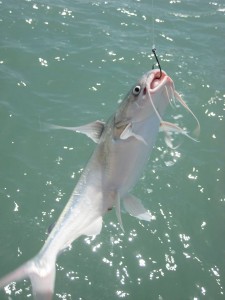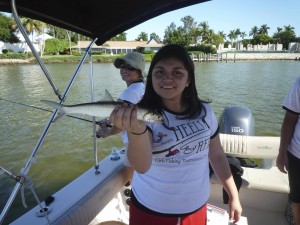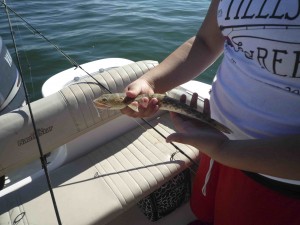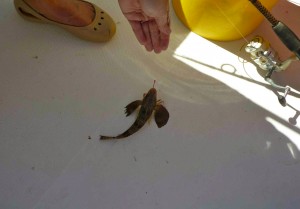5 Saltwater Fish You Don't Want to Catch
By Debbie Hanson
Mar 06, 2014
Sharp teeth, stinging barbs and odd croaking sounds are just a few of the reasons why anglers aren't fond of catching certain saltwater fish species.
Sharp teeth, stinging barbs and odd croaking sounds are just a few of the reasons why anglers aren't fond of catching certain saltwater fish species. Most of us hope that if we're fishing inshore and we see our rod tip go down, that there's a nice 27 inch redfish or 31 inch snook on the other end of the line. Unfortunately, that's not always the case. If you've been fishing long enough, you've probably experienced your fair share of undesirable catches… and may even have a few scars to prove it.
Here are five saltwater fish that you don't want to catch and the reasons why:
-
Gafftopsail Catfish. Quite different from its cousin, the non-venomous freshwater catfish, the bluish-silvery gafftopsail catfish has venomous spines on the pectoral and dorsal fins that can deliver a painful and toxic sting. The gafftopsail catfish should never be handled. Always use a dehooker and exercise caution if one happens to land in your boat or near your feet. This species is most frequently found in the shallow inshore waters of the western central Atlantic Ocean, the Gulf of Mexico and the Caribbean Sea.


-
Sawfish. The sawfish isn't really a fish as its name implies, but is actually a member of the ray family. This strange-looking fellow has a long nose extension that is lined with plenty of sharp teeth. Sawfish are generally found in marine or brackish coastal inshore waters such as estuaries, lagoons and river deltas. All species of sawfish are currently listed as endangered or critically endangered by the International Union of Conservation of Nature due to diminishing habitats and overfishing. If a sawfish is accidentally caught, it must be released unharmed.

.jpg)
-
Ladyfish. Found throughout tropical and subtropical ocean and brackish waters, ladyfish often swim in large schools along shorelines and in estuary areas. These silvery fish resemble juvenile tarpon in appearance and are wild jumpers when hooked. They can be a fun fight if you hook one, but when it comes time to take them off the line, be warned — they are projectile defecators.


-
Lizardfish. Most easily identified by their slender and somewhat cylindrical bodies, these fish are named accordingly because they have heads that resemble that of a lizard. They are found throughout the world in tropical and subtropical ocean waters. If you land a lizardfish, always use a dehooker since they have plenty of sharp teeth. In fact, even a lizardfish's tongue is lined with teeth!


-
Sea Robin. Sea robins have large pectoral fins that almost make them appear like a bird in flight when swimming. They are bottom-dwellers that primarily inhabit the temperate coastal waters of North America. One of the strangest distinguishing characteristics of a sea robin is the presence of a drumming muscle that makes a noise similar to the croaking of a frog when the fish beats this muscle against its swim bladder.


What undesirable or unexpected fish have you caught? Join our community and share your strangest fish stories with us!
Source: Encyclopedia Britannica









